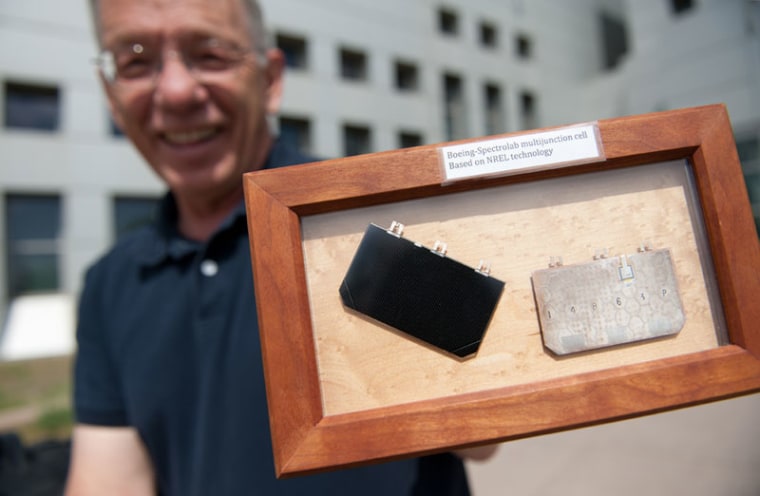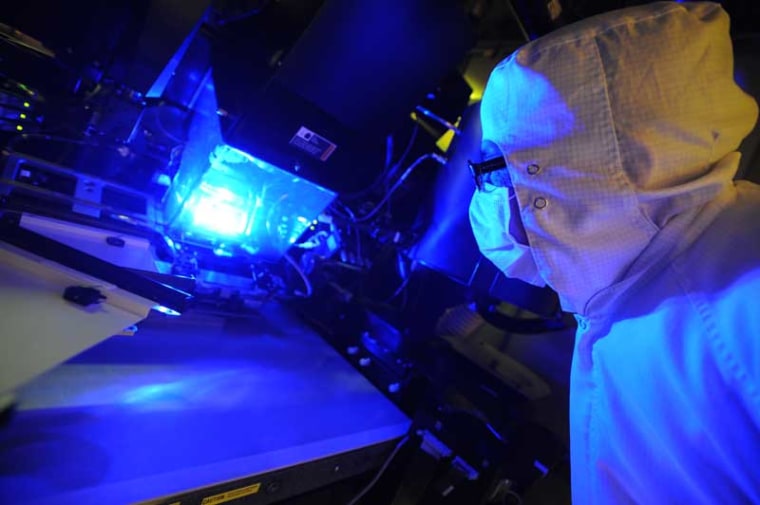Scientists at the U.S. Department of Energy have created a solar cell that can convert 44 percent of sunlight hitting it into electrical energy, setting a new record for solar cell efficiency. But it was only achieved by multiplying the power of the sun by nearly 1,000.
The ongoing research is being done at the III-V Multijunction Photovoltaics group at the Department of Energy's National Renewable Energy Laboratory, where the previous record of 43.5 percent was set. So while it's not a huge leap in efficiency, it's still a record.
The researchers achieve these high efficiencies by stacking multiple "junctions" into a single solar cell, each of which absorbs light at a slightly different wavelength. The "III-IV" in the name refers to the fact that the elements used come from the third and fifth columns of the periodic table.
A new material with many desirable properties was discovered by accident (gallium arsenide diluted with nitrogen), but proved extremely difficult to manufacture. Researchers needed to use a technique called molecular beam epitaxy to minimize impurities in the material — but no one in the world could do it.
Solar Junction, a company started by researchers from Stanford University, decided to take up the challenge. With a few million dollars in funding, Solar Junction and NREL managed to make the new process work. The result was the "SJ3" cell, which has been breaking records ever since.

The catch is that it's not like a traditional solar cell, which simply receives sunlight on its surface and creates a modest charge from the photons. The SJ3 cell requires the power of the sun to be multiplied by special lenses, creating a beam of light hundreds of times brighter than ordinary sunlight.
In this kind of system, the power is measured in "suns": A beam 10 times brighter than the sun would be described simply as 10 suns. And the previous efficiency record was set by a lens system that created 415 suns. The latest record was set using 947 suns.
Naturally, one may wonder if such a design is practical — after all, how often does the sun shine a thousand times brighter than normal? But the lenses actually take normal sunlight that might have hit in a diffuse way on normal cells and concentrate it onto the more efficient SJ3 cell. So in the end it's just using the same area of sunlight in a different way.
The NREL emphasized in the report describing the record that the SJ3 design can easily replace solar systems used in satellites and other space-bound machines — but it's lighter and more efficient, reducing rocket load and allowing for more onboard electronics.
What's next? Tweaking the design to include a germanium layer used previously could raise efficiency as high as 50 percent — definitely a major landmark in solar power, if researchers can achieve it, although applying it to everyday power needs is another project altogether.
Information on other research being done by the NREL, including other forms of solar cells and systems, can be found at their webpage. More technical details about the SJ3 cell are in the NREL article describing the record.
Devin Coldewey is a contributing writer for NBCNews Digital. His personal website is coldewey.cc.
